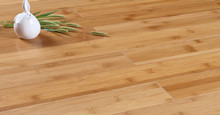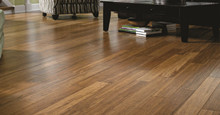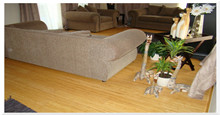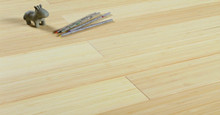Posted on 2017-11-20 8:55:22
Bamboo is a solid choice when it comes to decorating the floors of our home according to sustainability because they are the fastest growing known ground plants, up to one meter in 24 hours. There are several types that adapt to the different needs of each room, since it is not the same room for children as the kitchen or the living room.
Resistance and color vary in the different modalities of bamboo. If there is an environmental condition where the use of bamboo is not recommended, it is excessive moisture or too much environmental dryness, which is not different from most woods.
When it comes to an area of the house that receives a lot of people, it is advisable to lean over the woven strand bamboo as it is more resistant and durable.
In any case, the quality of bamboo is determined by its age. Between 5.5 and 6 years of growth is the ideal time to ensure a mature, solid and durable fiber. Still, bamboo is not considered hardwood, compared to that of trees with longer ripening cycles. Meanwhile, bamboo grows like a weed and hence is considered more sustainable.
For their manufacture, the bamboo pieces are glued together by face or edge, according to whether vertical or horizontal streaks of bamboo are required, forming blocks by hot pressing, which once softened by immersion in water, are cut into sheets. Said plates are dried to the correct moisture content and then sanded and profiled for sewing.
Bamboo veneer and bamboo skin veneers are getting more and more attention in the construction in today‘s society. These bamboo products are mainly used for wall, floor, roof decoration and indoor and outdoor building decorations, with a lot of features. Bamboo Woven Veneers and Bamboo Skin has the characteristics of natural texture, simple and natural, and advanced surface wear resistance, which has been widely used in practice and obtain suppressive power in desired results.
Bamboo Woven Veneers appears to provide a new high flavor to the decoration of the house and the choice to equalize. Bamboo furniture in the bamboo furniture manufacturing industry and new interior decoration industry, as new natural environmental protection material, can be widely used, it has wide possibilities. Bamboo Knitting is a type of pure handmade decorative material for furniture and interior decoration.
Bamboo veneer in the form of bamboo panels but providing the same color and grains at significant low cost!
The bamboo veneer is cut from the pressed bamboo block. It provides the same color and grains as the bamboo panels. This can be applied to plywood veneering, indoor decoration, engineered flooring etc. to avoid cracks during combat, the bamboo veneer enables easy to press the veneer sheet on a panel, which is a thin cellulose wool or paper thin, but with stronger support.
Production process for product- Stip (strips can be added in 5 different ways :)
1. Plain pressed- Bamboo strips are pressed against each other horizontally and sticking under high pressure, specialty bamboo nodes are clearly visible
2. Side pressed- Bamboo strips are pressed against each other and sticking under high pressure, specialty bamboo nodes are not very pronounced
3. Weaving thread- Strips are connected through thread weaving, as well as, a fabric support product is applied to make it more rigid, this is the base material for carpet / tile products.
4. Tape- Strips are connected through placing tape on reverse. In addition, a fabric support product is applied to make it more rigid, it can also be used as the base material for carpet / tile products.
5. Density- This one is made in a different way, bamboo strips are crushed and pressed together with ultra-high pressure, in this process a very durable end product that is equal to the hardness of a wood completely change the structure.
Keep the above mentioned things in mind when you are going to buy Bamboo veneers. The wrong choice of product not only will cost you double but also create an imperfect look at your home. Use expert advice in case you are unsure of your choice.




